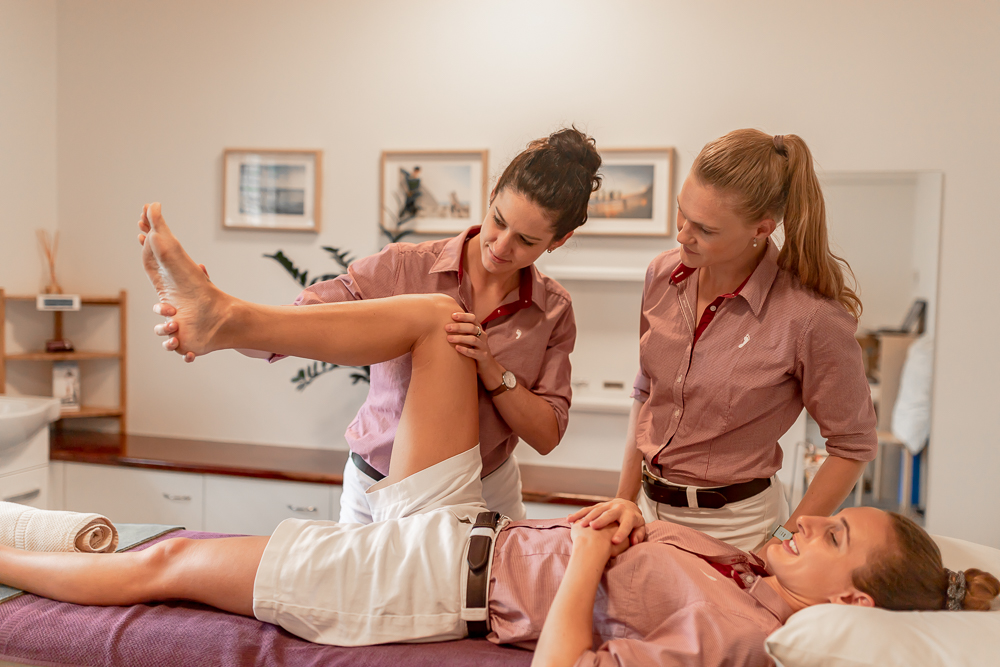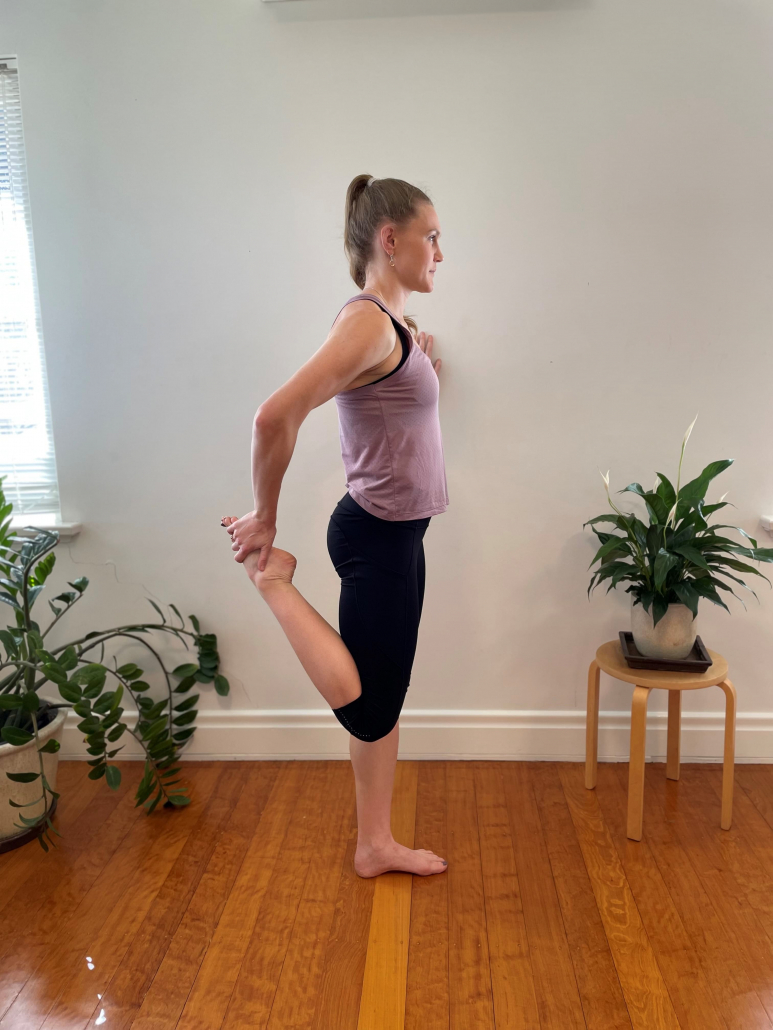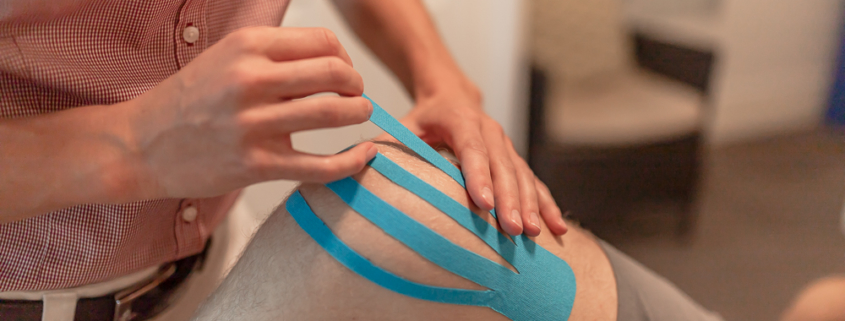What Causes Knee Pain?
Knee pain is a common reason that people present to physiotherapy. They may be suffering from knee pain in isolation or within a broader complaint of symptoms. Your knees are important in mobility and day to day activities, and are influenced directly from the feet, ankles and hips. This article will look into what causes knee pain and the most common presentations we see in our clinic. The vast majority of knee pain can be treated conservatively through a treatment program created by your Physiotherapist. Most of the knee pain presentations that we see at Barefoot Physiotherapy are a result of sustained increased load.
What Causes Knee Pain?
The knee joint is a modified hinge joint that moves primarily in one linear direction. A relatively small amount of rotation occurs as the knee moves through full extension and flexion. The joints that make up the overall knee joint complex include the tibiofemoral (between the thigh and shin), the patellofemoral (the kneecap) and the nearby tibiofibular (between the two shin bones). There are a series of ligaments and cartilage structures also involved in this joint. These include medial and lateral collateral ligaments (MCL and LCL respectively) external to the joint capsule, Anterior and Posterior Cruciate Ligaments (ACL and PCL respectively) and the fibrocartilage meniscus within the joint capsule. Around the patella or kneecap are the patella tendon and ligaments.
Knee pain can also come from tightness or overuse of muscles in the area. Or it can be from nerve irritation presenting with symptoms in this area.

Depending on the activities, age and history of the client, the physiotherapist will perform a variety of assessments. These will determine what causes knee pain in the individual person. A younger or more athletic person may have pain stemming from an acute injury to the above tissues, or from muscular overload. Whereas an older person may be more likely to have osteoarthritis or nerve irritation in the area. This is not a hard and fast distinction, and it is important not to rule causes in or out prior to a thorough assessment from a health professional.
The Most Common Reasons for Knee Pain
As previously mentioned, there are many knee pain reasons. Prior to a physical assessment, your physiotherapist will discuss a detailed history, including any other injuries or niggles that may be relevant.
- Acute injuries: These are more commonly seen in a sporting context. This can be from a fall, physical contact/ tackle, or an awkward pivot. This may include ACL or MCL tears, meniscus tears or muscle strains. More rarely there may be a bony fracture involved.
- Tendinopathies: This is an overload of the tendon (where the muscle attaches to bone). This is due to an increase of loading that occurred beyond the capacity of the tissue. Tendinopathies are commonly seen with a recent addition of plyometrics or running.
- Nerve Irritation: this can present as a feeling of overall muscle tightness around the knee, pulling/shooting behind the knee. Particularly when the hip and knee is straight.
- Osteoarthritis: as we age it is common to have arthritic changes within joints, and especially common within the knee joint. This can present as pain, decreased ranges or difficulty moving in certain ways. Although we can’t alter arthritic changes (outside of surgery), we can positively influence the body’s response to these changes. Moving better and getting stronger can decrease the overall pain experienced.
- Paediatrics: Conditions such as Osgood-Schlatters Disease are relatively common in adolescents undergoing a growth spurt. This can lead to an overload of the tissues at the front of the knee. In this population it is important to rule out Perthes Disease. This is an idiopathic necrosis of the femoral epiphysis (top of the thigh bone) which can refer as knee pain.
What Are My Treatment Options for Sore Knees?
We now know there are multiple factors involved in what causes knee pain. Therefore there are multiple factors that can be addressed in your treatment. After ruling out the need for immediate imaging, our goal is to de-load the area and reduce the symptoms you are experiencing. Your physiotherapist will use a combination of hands-on treatment to reduce any relevant nerve irritation and muscle spasm. This may include joint mobilisations, soft tissue massage or dry needling.

You will be given advice on immediate load management and changes to activity. In the initial stages of rehabilitation we want to find a zone of activity to keep you moving without any aggravation of symptoms. Following this initial de-load period, your management will consist of muscle activation and retraining. This will likely focuse on glutes, hamstrings, quads, calves, and abdominals (this is different for every person).
At Barefoot Physiotherapy we assess the entire body to determine if there are any areas that also need to be addressed. This will help to reduce the overall load on the knees and the rest of the body. From here we build on increasing strength whilst maintaining improvements to ranges and symptoms. Our clients all receive a home exercise program that is relevant to them.
The Best Exercises for Sore Knees
The best exercises for improving knee pain and reducing the underlying factors in what causes knees to ache follow the principles of de-load, retrain, and reload.
De-load: This usually involves muscle releases to help improve pain free movement ranges. Most often they will focus on the knee itself, plus any other areas your physiotherapist has found relevant for you. Typical releases include glute, deep hip rotator or quad muscles with a trigger ball, calf releases using your thumb or a trigger ball, gentle active range movement stretching glutes, adductors, calves, or quads.
Retrain: After de-loading it is important to retrain movement and activation patterns. This helps to prevent accumulated strain from causing symptoms in the future. Your physiotherapist will help you find cues for glute activation, quad and hamstring co-contraction, intrinsic foot activation and improved balance, amongst others.
Reload: This section becomes a bit more exciting as we add a strength component. The muscle activation cues now get to be layered on larger movements like squats, deadlifts, dynamic balance, and lunges. If you have a particular activity to return to, this part of the rehab can be specialised to your specific movement demands.

How Can I Prevent Sore Knees?
To prevent sore knees in the future it is important to stay mindful of your overall load management. For example, if you are wanting to start running you need to consider more obvious elements such as speed and length of your run. However, you also need to consider your strength and balance capacity, the surface you run on or the shoes you run in. As you increase the load in one area, it is important to include an effective warm-up to help prepare the body. Also make sure the body is receiving enough support in the form of rest/ sleep, nutrition, and muscle de-loading. This is true of any activity, whether that is training for a marathon, going for a hike, or playing with the grandkids.
Have Knee Pain? Contact A Physiotherapist Today
The aim of this article was to help you gain a better understanding of what knee pain is, how it is caused and who can help. Whether you have been experiencing long term knee pain, or just starting to feel a bit of a niggle, Barefoot Physiotherapy can help get you back to your activities as quickly as possible with our knee pain Brisbane treatment. If you have any concerns regarding knee pain, see Barefoot Physio for a thorough assessment, treatment, and management plan.








Leave a Reply
Want to join the discussion?Feel free to contribute!